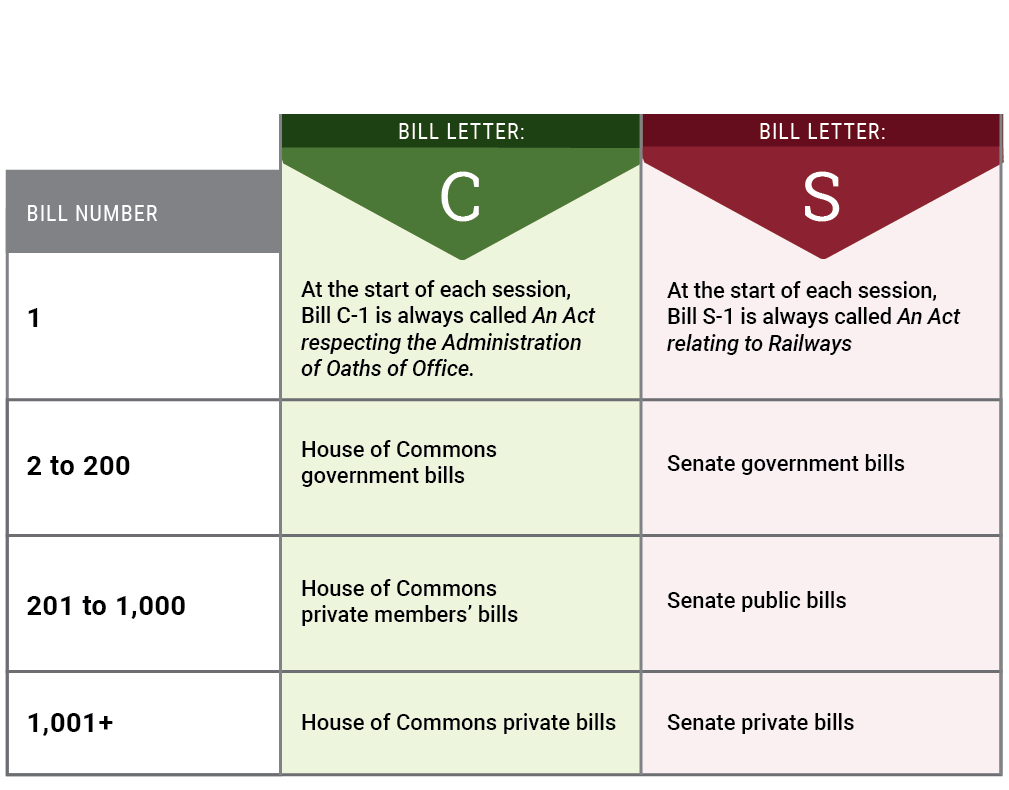What’s your number? How Parliament numbers its legislation

Every piece of proposed legislation that goes through Parliament, also referred to as a bill, has a title, but each one is also assigned a sort of code, like S-233 or C-16.
There is a logical system to the way bills are numbered.
When a bill originates in the Senate, the letter “S” is placed before the assigned number. When the letter “C” precedes the number, it means the bill was introduced first in the House of Commons.
The number also tells us something about a bill. They are numbered in chronological order based on when they are introduced — but that’s not the only clue these numbers provide.
In the Senate, for instance, numbers 2 through 200 are reserved for Senate government bills. The government initiates most of its legislation in the House of Commons, but it sometimes introduces government legislation in the Senate. Regardless of where a bill originates, it must be adopted in identical form by both houses to become a law.
Numbers 201 to 1,000 are reserved for Senate public bills — pieces of legislation introduced by individual senators to address matters of broad concern and of national or regional interest.
The numbering is similar in the House of Commons: numbers 2 to 200 indicate a government House bill while 201 to 1,000 signify a private member’s bill, the House of Commons equivalent to a Senate public bill.
Numbers 1,001 and up indicate a private bill in both houses. Not to be confused with a private member’s bill, a private bill is a fairly rare piece of legislation that affects only an individual or a small group of people, such as a bill to incorporate a private company. Private bills originate almost exclusively in the Senate.
As for bills S-1 and C-1, those are symbolic bills introduced at the start of every parliamentary session.



